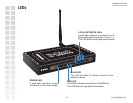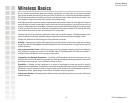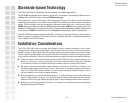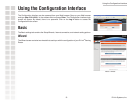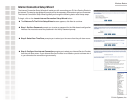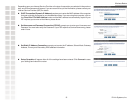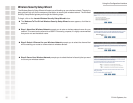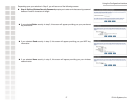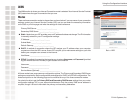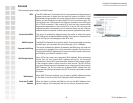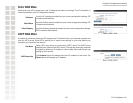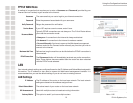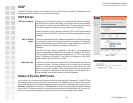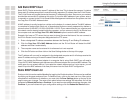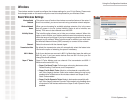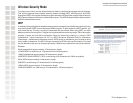
Using the Configuration Interface
18 D-Link Systems, Inc.
WAN
The WAN section is where your Internet Connection mode is selected. Your Internet Service Provider
(ISP) determines the type of connection that you use.
Modes
There are three connection modes to choose from as shown below. If you are unsure of your connection
settings, contact your Internet Service Provider (ISP) and you can enter the necessary information
on the QIG or print this page and write the settings for future reference.
Primary DNS Server: _____._____._____._____
Secondary DNS Server: _____._____._____._____
Static: Used when your ISP provides you a set IP address that does not change. The IP information
is manually entered in your IP configuration settings.
IP Address: _____._____._____._____
Subnet Mask: _____._____._____._____
Default Gateway: _____._____._____._____
DHCP: A method of connection where the ISP assigns your IP address when your computer
requests one from the ISP’s server. Some ISP’s require you to make some settings on your side
before your computer can connect to the Internet.
Host Name:______________________
PPPoE: A method of connection that requires you to enter a Username and Password (provided
by your Internet Service Provider) to gain access to the Internet.
Username:______________________
Password:______________________
Service Name (Optional):______________________
All three modes have some common configuration options. The Primary and Secondary DNS Server
settings are required for Static configurations and optional for DHCP and PPPoE configurations. The
Advanced options on the following page can be modified for any of the three connection modes.
You should be able to get the Primary DNS and Secondary DNS Servers settings from your router
configuration settings, ISP, or your network administrator. Only the primary DNS server address is
required, though it is best to have both the primary and secondary addresses.
Basic > WAN



